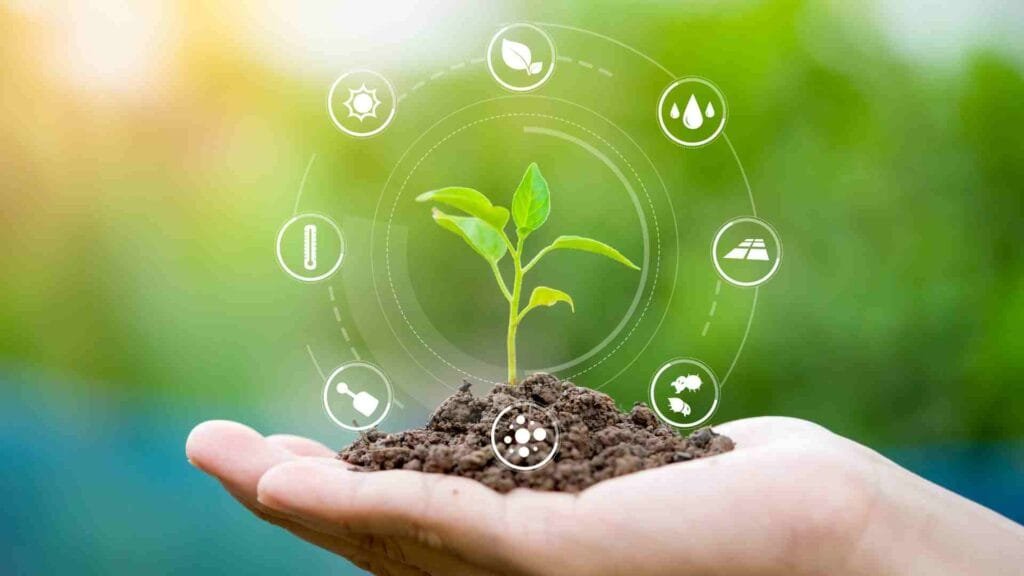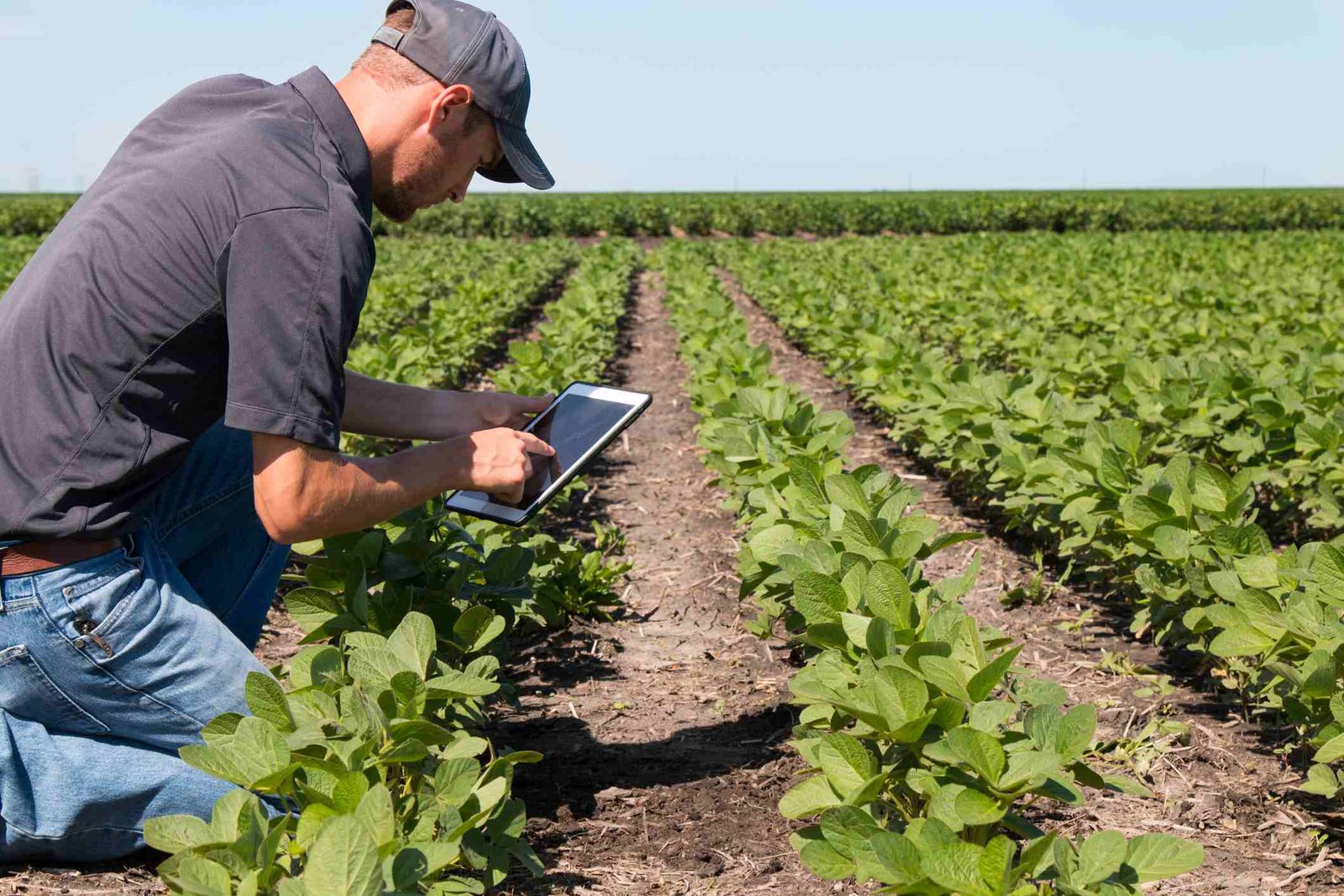Agronomy is a fascinating and essential field that plays a huge role in how we grow food and sustain life on Earth. If you’ve ever wondered how farmers produce crops like wheat, rice, or corn to feed billions of people, agronomy is the science behind it. In simple terms, agronomy is all about understanding plants, soil, and the environment to grow crops efficiently and sustainably.
Table of Contents
What is Agronomy?
Agronomy comes from two Greek words: “agros,” meaning field, and “nomos,” meaning management. So, agronomy is the science of managing fields to grow crops. It’s like being a detective and a caretaker at the same time figuring out what plants need to thrive and making sure they get it. Agronomists study everything from the seeds we plant to the soil they grow in, the water they drink, and even the weather that affects them. Their goal is to help farmers produce more food, better-quality crops, and do it in a way that doesn’t harm the planet. It is also called Crop Science.
Think of Crop Science as the bridge between nature and farming. It combines biology, chemistry, and environmental science to solve real-world problems like hunger, climate change, and soil health. Whether it’s deciding when to plant seeds or how to stop pests from eating crops, agronomy provides the answers.
Its Scope

The scope of Crop Science is huge because it touches so many parts of farming. It’s not just about growing plants it’s about doing it smarter and better. Here are the main areas agronomy focuses on:
Crop Production
This is the heart of Crop Science. It’s all about growing crops like rice, maize, soybeans, or cotton. Agronomists figure out the best ways to plant, water, and harvest these crops so farmers get the most out of their fields. They study things like seed quality, planting schedules, and how much sunlight or rain a crop needs.
Soil Management

Soil is like the home where plants live, and agronomy makes sure that home is healthy. Agronomists test soil to see if it has enough nutrients like nitrogen or potassium that plants need to grow. If the soil is weak or tired, they suggest ways to improve it, like adding fertilizers or rotating crops (planting different crops each season to keep the soil strong).
Water Use
Plants can’t survive without water, but too much or too little can ruin a harvest. Agronomy studies how to use water wisely, especially in dry areas where every drop counts. This might mean setting up irrigation systems or choosing crops that don’t need much water.
Pest and Disease Control
Bugs, weeds, and diseases can destroy crops if they’re not stopped. Agronomy finds safe and effective ways to protect plants, like using natural predators (good bugs that eat bad bugs) or safe chemicals when needed.
Sustainability

Today, Crop Science is all about farming in a way that doesn’t hurt the environment. This means reducing waste, saving water, and keeping the soil healthy for future generations. Agronomists also explore organic farming, where crops grow without harmful chemicals.
Technology in Farming
Crop Science isn’t stuck in the past it’s super high-tech now! Drones, satellites, and sensors help agronomists monitor fields, predict weather, and even spot problems before they get big. This makes farming faster, cheaper, and more precise.
So, the scope of Crop Science is broad it’s about growing crops, caring for the land, and using science to solve farming challenges. It’s a mix of old-school farming wisdom and cutting-edge ideas.
The Role of Agronomy in Agriculture
Agriculture is how we feed the world, and agronomy is the backbone that keeps it strong. Without agronomy, farming would be a guessing game, and we’d struggle to grow enough food for everyone. Here’s why agronomy is so important:
Feeding the World
The global population is growing over 8 billion people now and everyone needs food. Agronomy helps farmers grow more crops on the same amount of land. For example, by improving seeds or fertilizers, agronomists can double the amount of wheat a field produces. This is called increasing crop yield, and it’s a big deal for fighting hunger.
Adapting to Climate Change
The weather isn’t as predictable as it used to be. Droughts, floods, and heatwaves make farming harder. Agronomy steps in with solutions, like breeding crops that can survive tough conditions or teaching farmers how to save water during dry spells.
Protecting the Environment
Farming can sometimes harm nature like when chemicals run into rivers or forests get cut down for fields. It finds ways to farm that don’t destroy the planet. For instance, it promotes practices like planting cover crops (plants that protect soil between harvests) or using fewer pesticides.
Supporting Farmers
Farmers work hard, but they can’t do it alone. Agronomists act like advisors, giving farmers the knowledge and tools they need to succeed. Whether it’s choosing the right crop for their land or figuring out how to stop weeds, agronomy makes farming easier and more profitable.
Improving Food Quality
It’s not just about growing more food it’s about growing better food. Agronomy helps produce crops that are tastier, healthier, and packed with nutrients. For example, scientists can develop rice with extra vitamins to help people who don’t get enough nutrition.
Boosting Economies
Agriculture isn’t just about food it’s about money too. In many countries, farming is a huge part of the economy. When agronomy helps farmers grow more and sell more, it creates jobs and lifts communities out of poverty.
Why Crop Science Matters Today
In 2025, Crop Science is more important than ever. The world faces big challenges climate change, shrinking farmland, and a growing population. Agronomy is like a superhero stepping in to save the day. It’s finding ways to grow food in deserts, on rooftops, or even in labs. It’s using AI and robots to plant and harvest crops faster. And it’s teaching us how to farm without using up all the Earth’s resources.
For example, imagine a farmer in a dry region who can’t grow anything because there’s no rain. An agronomist might suggest a drought-resistant crop like sorghum or set up a simple drip irrigation system. Suddenly, that farmer has food to eat and sell. That’s the power of agronomy it turns problems into possibilities.
Conclusion
Crop Science is the science that keeps agriculture alive and thriving. It’s about growing crops, caring for the land, and feeding the world in a smart, sustainable way. From studying soil to fighting pests to using drones, agronomy covers it all. Its role in agriculture is massive it boosts food production, protects the environment, and helps farmers succeed. In a nutshell, agronomy is the key to making sure we have enough food today and tomorrow.
Frequently Asked Question (FAQ)
What is the main goal of agronomy?
The main goal of it is to improve crop production in a sustainable and efficient way. This involves:
1. Maximizing yield and quality of food, fiber, and fuel crops.
2. Protecting soil health and preventing degradation.
3. Optimizing water, fertilizer, and pesticide use to reduce waste.
4. Adapting farming techniques to climate change for long-term food security.
How does agronomy benefit farmers?
It provides farmers with practical, science-backed solutions to improve productivity and profitability. It offers guidance on selecting high-yielding crop varieties, implementing efficient water management systems, and adopting integrated pest control strategies.
What are some common crops studied in agronomy?
It primarily focuses on major food and cash crops that feed the world, including staple grains like wheat, rice, and corn; protein-rich legumes such as soybeans and pulses; fiber crops like cotton; and oilseeds including sunflower and canola. It also covers forage crops for livestock and emerging biofuel crops. These crops are studied to improve their yield, quality, and resilience against pests, diseases, and climate stresses through better cultivation techniques and scientific advancements
Related Articles

